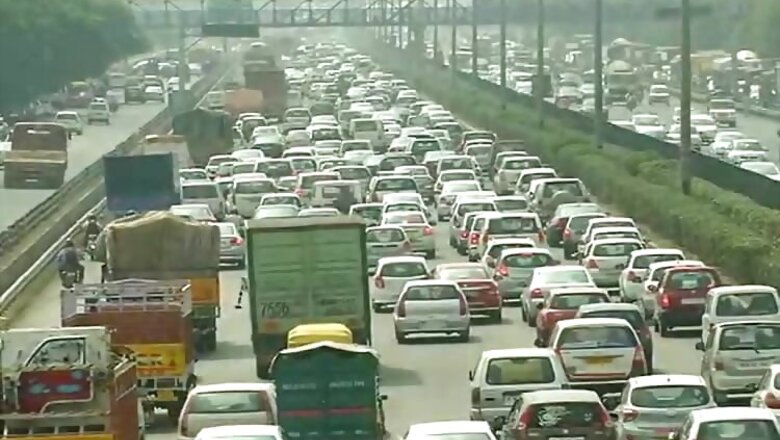
views
New Delhi: The level of suspended particulate matters, PM 2.5 and PM 10, have seen a "steady fall" in Delhi's air despite a drastic fall in temperature over the last four days, which has the potential to elevate the quantity of such pollutants. A System of Air Quality and Weather Forecasting and Research (SAFAR) study termed it as the "first good indicator" of the season and said a "sudden fall in influx of emissions" may explain the fall.
Gufran Beig, Chief Project Scientist of SAFAR, said that PM 2.5, harmful microscopic particles that can penetrate deep into the lungs, have decreased "very significantly" in the last two-three days. "This is another indicator that indeed something worked in favour of relatively much better PM figures for this time of the year with such cooler weather conditions. There is one rider though, the wind speed is not high but at the same time, it is not really as calm as it should have been at this time," said a report, prepared by Beig.
The average level of PM 2.5 has been 129 microgram per cubic metre of late, still "very poor", which at this time in was 196 with not only the minimum temperature in the same range but also much lesser maximum temperature (16 degrees Celsius as opposed to 2014, 24 degrees Celsius). A dip has also been observed in the real-time readings of Delhi Pollution Control Committee (DPCC), SAFAR and Central Pollution Control Board (CPCB) figures where the air quality index hovered between 'moderate', 'poor' and 'very poor'.
PM 2.5 was at 96 micrograms per cubic metre at around 6 PM in Anand Vihar, one of the Delhi's majorly polluted spots. In areas such Punjabi Bagh and Mandir Marg, the corresponding figures were 83 and 22 around the same time. The safe limits of PM 2.5 and PM 10 are 60 and 100 and anything beyond that poses threat to a healthy respiratory system. They have been consistently high, at times multiple times, in the capital, prompting the government to resort to a host of anti-pollution measures. Beig said the fall was noteworthy as the weather conditions, "drop in temperature, normal wind flow pattern and relatively calm local wind", were congenial for the formation of off-white (light brownish) haze.
"The haze which has contribution of both fog and particulate matter reduces visibility faster and last longer which is not the case so far," he said. SAFAR has also observed a slight increase in the level of gaseous pollutants like Carbon Monoxide (CO) and Ozone (O3) "although, still well within the permissible limit."
















Comments
0 comment